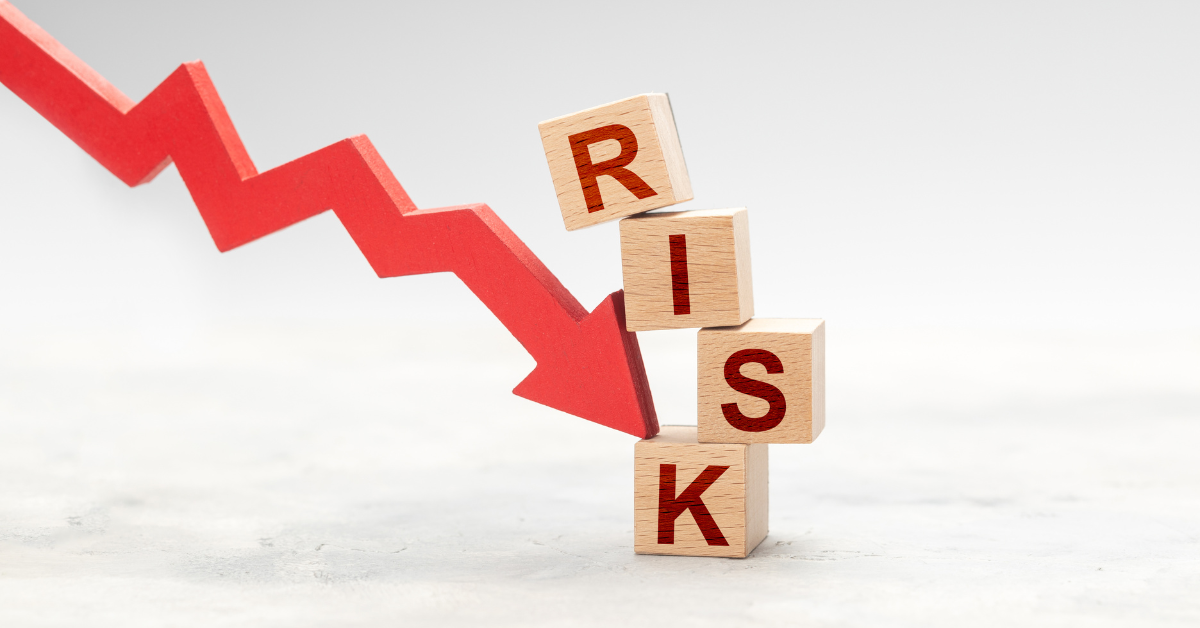The Hidden Risks of Continuing to Defer IRA Money

Many advisors are working with clients to consider Roth Conversions. And usually, the main driver of those discussions is how to address the potential risk of rising taxes.
The belief that taxes could be higher in the future than they are today, for many savers, has prompted the Roth Conversion discussion. And if we’re mitigating market risk and income risk through the process of diversification, why not also address tax risk through a similar diversification process?
And yet, 90% of retirement assets are still in traditional tax-deferred vehicles. This means a large percentage of retirement money is still subject to the risk of rising taxes.
I could list out the many objections to Roth conversions that are driving that statistic, but for most, it’s the perceived tax bill that comes with conversion.
So I now beg the question: If the risk of rising taxes is not enough to motivate a conversion, are there additional hidden risks of continuing to defer taxes in traditional vehicles like IRAs and 401ks?
Risk #1: Additional Growth
Is additional growth ever…bad? Of course not. Growth is always good. The more, the better. Never turn down additional growth.
But… could that additional growth come with some expensive side effects? The answer is yes. And it’s not just expensive - it’s exponentially expensive. Let me explain.
In traditional tax-deferred accounts, the IRA owner must pay tax on not only the amount deposited but all the growth. So, that means more growth equals more tax.
That is to be expected. But, it can become a problem, especially during the RMD process.
Is it possible for that additional growth to push you into a higher tax bracket? Sure. What about IRMAA? Is it possible for the additional growth to push you into paying a higher IRMAA surcharge? Absolutely.
Many savers feel that taxed growth is better than no growth at all. And I generally agree. But knowing this is a risk could be a motivating factor in the Roth Conversion decision - especially when savers see the math.
Consider the following example:
A 60-year-old couple with a $1,000,000 IRA sees their funds growing at a net rate of 5% per year. Each spouse has a salary of $150,000 with plans of retiring at 70 to max out their Social Security benefit. They plan to live off of their Social Security and an additional $50,000 of taxable income. They are considering a Roth Conversion for $100,000 each year for five years.
If they go through with the Roth Conversion, the total conversion taxes they pay on the conversion would be $126,500. Plus, they would have to pay some additional IRMAA surcharges in the later part of the conversion in the amount of $17,546. That makes the total Tax and IRMAA cost of conversion $144,046.
Of course, they could just continue to defer those taxes in their IRA. In fact, there would be no IRMAA surcharges to pay. However, the total tax burden of the $500,000 portion of their IRA would grow to $552,231.
In this scenario, the case for conversion is clear.
But what if they did very well in the market and returned 8% per year instead of 5%? Great news. More growth is always a good thing. For sure.
But… if they keep their funds in the IRA, all that growth would be taxable. And subject to RMDs. And higher RMDs could not only mean more taxes but also push the client into paying more IRMAA surcharges.
In fact, both prove to be true in this example. The tax burden would grow to $1,376,787! And the client’s IRMAA surcharges, which were not present in the 5% growth example, are now $168,229 over their lifetime.
That is a case of exponentially expensive growth.
Here’s the best news. The Roth Conversion amount does not change. Because in the conversion, you avoid those RMDs and any income from Roth IRAs are not subject to the IRMAA surcharge calculation.
Risk #2: The Widow’s Penalty
The widow’s penalty refers to the situation, unfortunately, one member of all retired couples must face. When the first spouse passes away, the surviving spouse must now file their taxes as a single filer. And those tax rates look a lot different than they looked when filing married filing jointly.
It’s at this point when the surviving spouse, with similar income needs, must file as a single filer. And in many cases, that means a higher tax bill.
But did you know this concept also applies to the IRMAA surcharge?
The government applies a very different table to single filers when calculating IRMAA. So that means many savers get a surprise fee they never saw coming.
Let’s revisit the previous example: Our 60-year-old couple with a $1,000,000 IRA growing at a net rate of 5% per year.
As a reminder, each spouse has a salary of $150,000 with plans of retiring at 70 to max out their Social Security benefit. They plan to live off of their Social Security and an additional $50,000 of taxable income. They are considering a Roth Conversion for $100,000 each year for five years.
You’ll remember, the “keep the IRA” example with 5% growth showed no IRMAA surcharges on the IRA money through the RMD process. Simply put, the additional income from the RMD each year did not force the married couple into a higher IRMAA bracket. So the IRMAA impact of the IRA money was zero.
However, let’s say the husband passed away at age 65, leaving the wife as a single filer. And guess what shows up now? Those ugly IRMAA surcharges. While their combined income didn’t meet the thresholds to qualify for IRMAA as married filing joint, as a single filer, her income pushed her well into the IRMAA range. In this example, those IMRAA surcharges would total between $54,365 and $130,604, depending on whether she took the IRA as a level income or if she only took RMDs.
Risk #3: Working Through Retirement
Do you know any small business owners out there who absolutely love what you do? Are you one of those business owners yourself?
I love my business. I love my advisor clients. And I absolutely love what I do. I can definitely see a world where I decide to keep doing it longer than the typical 65 or 70 retirement age.
Now, I would certainly still elect Medicare and, therefore, potentially be eligible for IRMAA surcharges. So how would that decision to keep working impact the example we discussed before?
Let’s revisit the previous example again:
Our 60-year-old couple has a $1,000,000 IRA growing at a net rate of 5% per year. Again, each spouse has a salary of $150,000 with plans of retiring at 70 to max out their Social Security benefit. They plan to live off of their Social Security and an additional $50,000 of taxable income. They are considering a Roth Conversion for $100,000 each year for five years.
But now, the husband has decided to keep working. That means his $150,000 working income continues in retirement. All other variables are the same.
Think that might have an impact on IRMAA calculations?
Of course, it does. The “IR” in IRMAA stands for “Income-Related”. And that means the more income, the higher the surcharge.
In this case, it would result in an extra $37,488 to $61,363 in lifetime government fees, depending on how the IRA is used in retirement. Just because this saver decided to continue doing what he loved past the traditional retirement age.
Risk #4: More Income-Related Changes
Here is a quick quiz for you: Name the most financially stable government trust fund set up to fund a health program.
The answer? It’s the trust fund established to cover Medicare Parts B and D.
As Becky explained in last week’s blog post, it’s not because the government has done a great job managing the fund. It’s because the government can raise premiums and surcharges on U.S. savers to make up any shortfall in the trust fund.
In 2006, Congress passed the Medicare Modernization Act. Part of this legislation created IRMAA, or the Income-Related Monthly Adjustment Amount surcharge.
This law allows the government to charge additional surcharges to retirees on Medicare with income above a certain threshold. And the kicker? They can increase this amount every year.
Those two key attributes of the bill are what make the trust funds for Medicare Parts B and D financially stable.
No need to drive this one home with an example. To me, the law is the example.
We have to ask: If the government is facing challenges funding other programs, where do you think they will turn to as an example of success? My guess is IRMAA. And thus, the “Income-Related” concept could start to multiply.
That means adding more and more value to income sources not subject to those “Income-Related” surcharge calculations.
In summary, if your clients believe that taxes could be higher in the future than they are today, a Roth Conversion could be a great way to diversify the taxation of their retirement assets. For some people, that alone is enough to convert.
For those that need even more motivation, it might be worth considering these potential risks lurking in the background. Whether it’s good news like experiencing more growth than you planned or terrible news like dealing with the passing of a spouse. Or maybe it’s just the government changing the rules again with the introduction of more “Income-Related” surcharges.
Either way, the evidence is mounting that many clients should be considering the diversification process of moving a portion of their tax-deferred assets to tax-free vehicles. The sooner you take action, the more tax and IRMAA savings could be yours. Let’s get started now!


